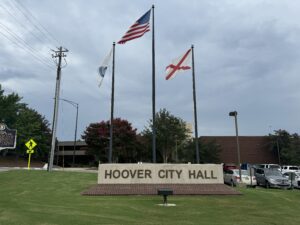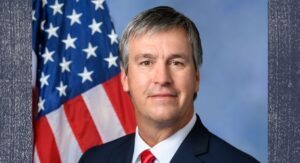Terri Sewell announces $3.6 million in funding to preserve Civil Rights sites

Rep. Terri Sewell announced over $3.6 million in funding from the National Park Service’s (NPS) African American Civil Rights Grant Program that is being awarded to preserve historic sites in Alabama related to Civil Rights and the African American struggle for equality. “I am thrilled that over $3.6 million in funding from the National Park Service is being invested into Alabama to preserve the living history of the Civil Rights Movement,” stated Sewell. “As the Representative of America’s Civil Rights District, I’m proud to lead the congressional effort every year to increase funding for the National Park Service Civil Rights Historic Preservation Grant Program to ensure that America’s civil rights history lives on. This is a big win for the State of Alabama and the many Foot Soldiers and Freedom Fighters on whose shoulders we stand.” According to Sewell’s press release, the grant program helps document, interpret, and preserve sites, and stories related to the African American struggle to gain equal rights as citizens. The grants are funded by the Historic Preservation Fund (HPF) and administered by the NPS. Established in 1977, the HPF is authorized at $150 million per year through 2023 and has provided more than $2 billion in historic preservation grants to States, Tribes, local governments, and nonprofit organizations. Administered by the NPS, HPF funds are appropriated annually by Congress to support various historic preservation projects to help preserve the nation’s cultural resources. Dr. Charles P. Everett IV, President of the Mount Zion AME Center Foundation, praised Sewell’s efforts to secure the funding. “The Genesis of our success began with Congresswoman Sewell,” stated Everett. “She provided information through grant workshops, which assisted our efforts in forming a team to work towards a successful application. We believe that when God gives you a vision, the provision will follow. We are grateful to the Congresswoman, God, and the entire Mount Zion A.M.E. Center Foundation Team.” The National Park Service has awarded the following grants, which total $3,665,408, for the following historic sites in Alabama: $500,000 to Birmingham’s Saint Paul United Methodist Church for preservation, restoration, and repair $50,000 to the Birmingham Black Radio Museum for the permanent exhibit at the Carver Theatre $499,799 to Auburn University for stabilization and exterior rehabilitation of the Tankersley Rosenwald School in Hope Hull $469,500 to the Alabama Historical Commission for stabilization and preservation of the Schooner Clotilda in Mobile, the Last-known Slave Ship to Import Enslaved Africans to the United States $500,000 to the Mount Zion Center Foundation, Inc. in Montgomery for the rehabilitation of the Mount Zion AME Zion Church Memorial Annex $50,000 to the Alabama Historical Commission for the Freedom Rides Museum Interior Exhibit Plan in Montgomery $50,000 to the City of Montgomery for the civil engineering of “The Civil Rights Movement in Montgomery, Alabama: The Planned Destruction of a Prosperous African American Community” $46,588 to Auburn University for “Memory and the March: Oral Histories with Selma’s Foot Soldiers” $500,000 to the Historic Brown Chapel AME Church Preservation Society, Inc. for the preservation of Selma’s endangered Historic Brown Chapel AME Church $500,000 to the Historic Tabernacle Baptist Church Selma AL Legacy Foundation, Inc. for critical systems and accessibility upgrades to Historic Tabernacle Baptist Church $499,521 to the Selma Center for Nonviolence, Truth & Reconciliation for rehabilitation of the Historic Sullivan Building for use as a community and culture center
$2.8 million awarded to Alabama historic sites
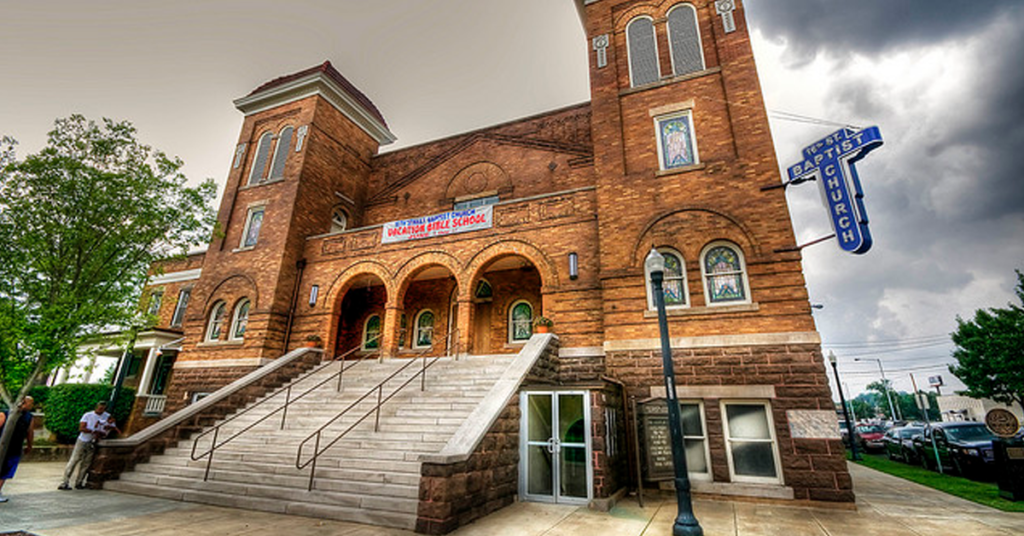
Rep. Terri Sewell announced Wednesday that over $2.8 million in funding from the National Park Service’s African American Civil Rights Grant Program is being awarded to preserve historic sites in Alabama. Sewell commented, “I am beyond thrilled that over $2.8 million in funding from the National Park Service (NPS) is being invested into Alabama to preserve the living history of the Civil Rights Movement. As Representative of America’s Civil Rights District, I have always fought to secure funding for the preservation of these historic sites as they are critical to ensuring that America’s story lives on. Every year when my colleagues and I join together to commemorate the pilgrimage of the Civil Rights Movement, we are reminded that history is elusive. It is incumbent upon all of us to ensure that our history is preserved and protected for generations to come.” The Historic Preservation Fund (HPF) uses revenue from federal oil leases on the Outer Continental Shelf, assisting with a broad range of preservation projects without expending tax dollars to mitigate the loss of a nonrenewable resource by benefitting the preservation of other irreplaceable resources. Established in 1977, the HPF is authorized at $150 million per year through 2023 and has provided more than $2 billion in historic preservation grants to States, Tribes, local governments, and nonprofit organizations. Administered by the NPS, HPF funds are appropriated annually by Congress to support a variety of historic preservation projects to help preserve the nation’s cultural resources. The National Park Service has awarded the following grants, which total $2,836,313, for historic sites in Alabama: $500,000 to the Saint Paul United Methodist Church for preservation, restoration, and repair $500,000 to the Sixteenth Street Baptist Church for preservation and rehabilitation $236,313 to the Elmore Bolling Foundation for the restoration and preservation of the historic Lowndesboro School $500,000 to the Lincolnite Club, Inc. for phase II structural repairs, window restoration, and building systems replacement of the historic Lincoln Normal School Gymnasium $50,000 to the Alabama Historical Commission for the Freedom Rides Museum exterior exhibit and window displays $500,000 to the Alabama Historical Commission for the phase III rehabilitation of the Moore Building $50,000 to the Selma Center For Non-Violence, Truth And Reconciliation for the Voting Rights Movement Education Project: Engaging history through digital and physical educational resources $500,000 to the Historic Tabernacle Baptist Church Selma AL Legacy Foundation Inc. for the critical complete re-roofing of gabled and domed roofs National Park Service Deputy Director, Shawn Benge stated, “This competitive grant program is just one of the many ways the National Park Service is working to preserve and interpret the lesser-known facets of our nation’s shared history From physical restoration projects to surveys, documentation, and education, this years’ grant funds will help many of our State, Tribal, local, and non-profit partners advance their preservation goals.”
Alabama tourism honored for civil rights promotion
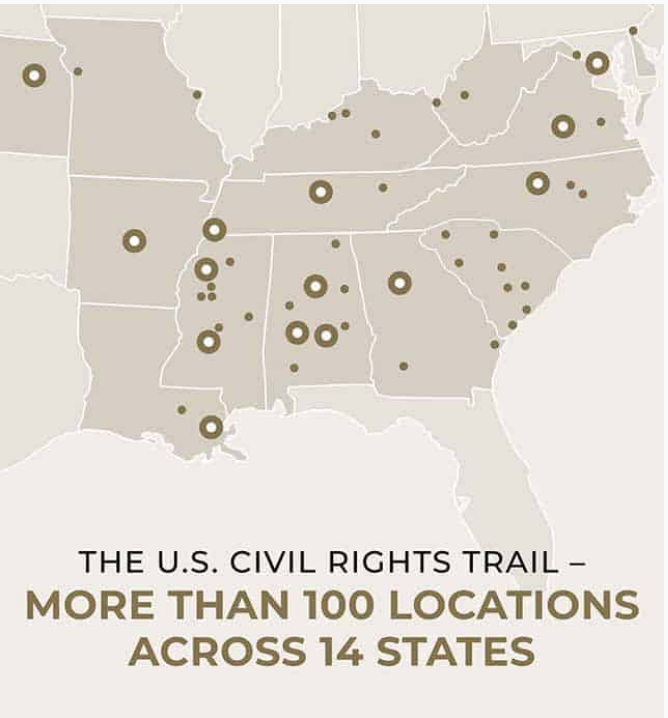
Alabama’s state tourism agency is being honored for its work promoting civil rights travel in 14 U.S. states. The office was presented with an award recognizing its marketing campaign for the U.S. Civil Rights Trail during an industry trade show in London on Tuesday. The trail promotes museums, churches and other African American landmarks across the South. Promotional materials include video interviews with civil rights participants from the 1960s and photos of landmarks. Alabama oversaw the project in partnership with the Atlanta-based TravelSouth USA and the National Park Service. The trail includes sites from Kansas to Delaware, including all of the Deep South. The state won an award for best regional destination. A news release says other finalists included areas in Spain, India, the Canary Islands and the Netherlands. Republished with the permission of the Associated Press.
Superintendent named for sites in Birmingham, Anniston
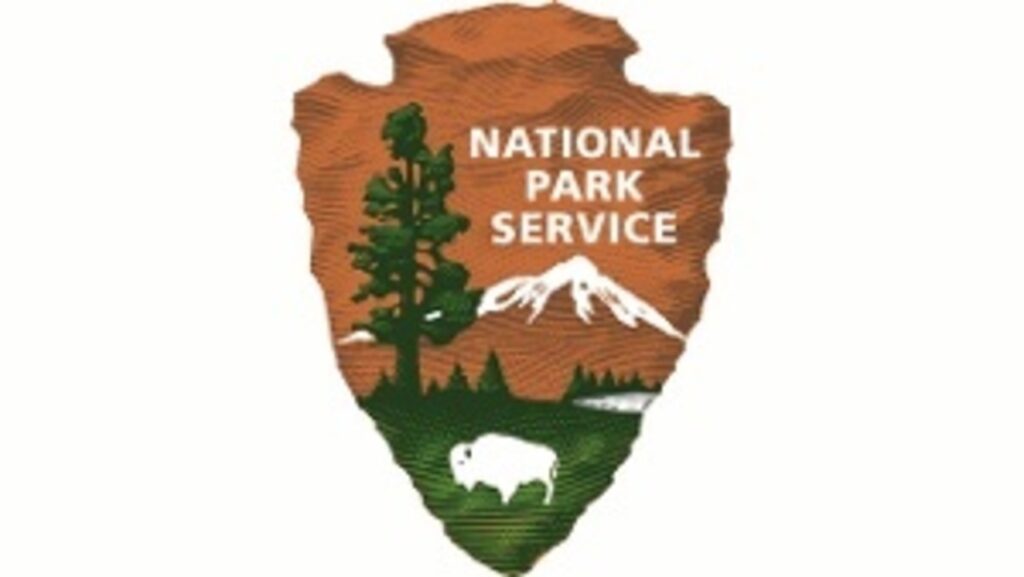
The National Park Service has named a superintendent to oversee new civil rights historical sites in Birmingham and Anniston. The federal agency says Kris Butcher will take over at the Birmingham Civil Rights National Monument and the Freedom Riders National Monument starting Oct. 27. Both sites were created during the final days of the Obama administration, and both are undergoing work to get them ready for the public. The Birmingham site encompasses parts of the city’s historic downtown black business district including the hotel where the Rev. Martin Luther King Jr. stayed during demonstrations in 1963. The Anniston site marks the bus station where interracial Freedom Riders were attacked in 1961. Their bus was attacked again and burned a few miles away. Butcher worked at a park site in Maryland. Republished with the permission of the Associated Press.
Senate backs major public lands, conservation bill
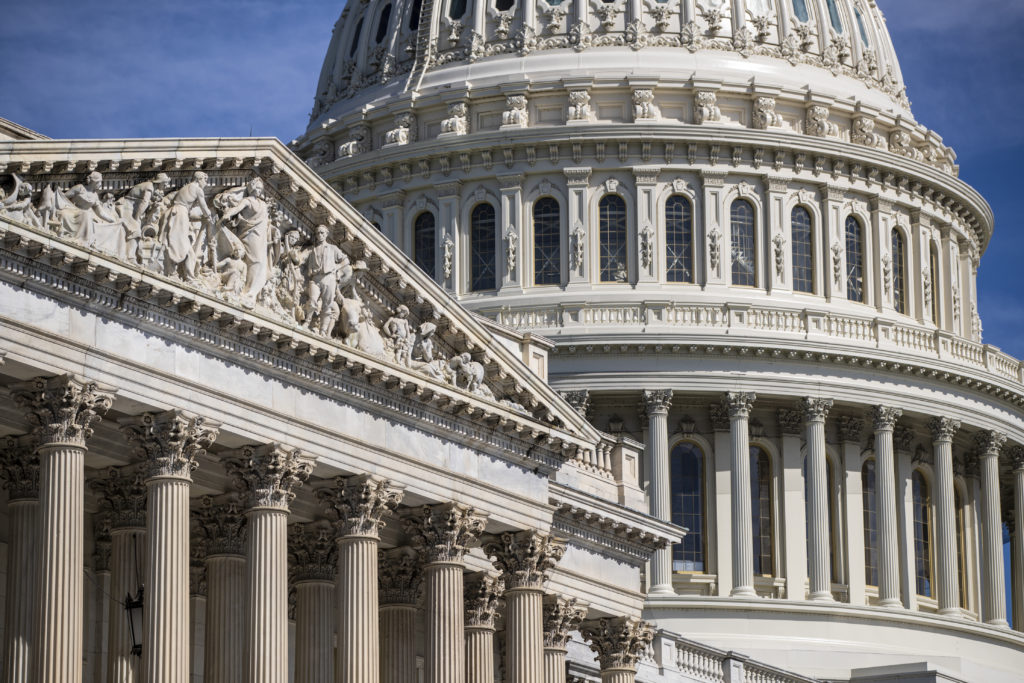
The Senate on Tuesday approved a major public lands bill that revives a popular conservation program, adds 1.3 million acres of new wilderness, expands several national parks and creates five new national monuments. The measure, the largest public lands bill considered by Congress in a decade, combines more than 100 separate bills that designate more than 350 miles of river as wild and scenic, add 2,600 miles of new federal trails and create nearly 700,000 acres of new recreation and conservation areas. The bill also withdraws 370,000 acres in Montana and Washington state from mineral development. The Senate approved the bill, 92-8, sending it to the House. Lawmakers from both parties said the bill’s most important provision was to permanently reauthorize the federal Land and Water Conservation Fund, which supports conservation and outdoor recreation projects across the country. The program expired last fall after Congress could not agree on language to extend it. “The Land and Water Conservation Fund has been a pre-eminent program for access to public lands” for more than 50 years, said Sen. Maria Cantwell, D-Washington. The program has supported more than 42,000 state and local projects throughout the U.S. since its creation in 1964. The hodgepodge bill offered something for nearly everyone, with projects stretching across the country. Even so, the bill was derailed last year after Republican Sen. Mike Lee objected, saying he wanted to exempt his home state of Utah from a law that allows the president to designate federal lands as a national monument protected from development. Lee’s objection during a heated Senate debate in December forced lawmakers to start over in the new Congress, culminating in Tuesday’s Senate vote. Sen. Cory Gardner, a Colorado Republican who clashed with Lee on the Senate floor, said the vote caps four years of work to reauthorize the Land and Water Conservation Fund and protect public lands. Sen. Lisa Murkowski, Republican-Alaska, who chairs the Senate Energy and Natural Resources Committee, said the bill enhances use of public lands and water, while promoting conservation and sporting activities such as hunting and fishing. The bill includes provisions sponsored by more than half of the senators, Murkowski said, applauding a “very, very collaborative” process. She and other senators called the Land and Water Conservation Fund one of the most popular and effective programs Congress has ever created. The program uses federal royalties from offshore oil and gas drilling to fund conservation and public recreation projects around the country. The fund is authorized to collect $900 million a year but generally receives less than half that amount from Congress. “This victory was a long time in the making, and it is the result of the steadfast efforts of many who care deeply about America’s natural treasures,” said Sen Richard Burr, Republican-N.C. “Protecting this program is the right thing to do for our children, grandchildren and countless generations so that they may come to enjoy the great American outdoors as we have.” The bill creates three new national monuments to be administered by the National Park Service and two others overseen by the Forest Service and Bureau of Land Management, respectively. The three park service monuments are the Medgar and Myrlie Evers Home National Monument in Mississippi and the Mill Springs and Camp Nelson national monuments in Kentucky. The Evers site was the home of the slain civil rights leader, while Mill Springs commemorates a Civil War battlefield. Camp Nelson was used as Union Army hospital and recruiting center during the Civil War. President Donald Trump proclaimed Camp Nelson a national monument last year, but the bill gives it permanent, congressionally approved protection. The bill also designates the former Saint Francis Dam site in California as a national memorial and monument. The dam outside Los Angeles collapsed in 1928, killing 431 people in one of the largest tragedies in California history. “While this monument will serve as a reminder of the consequences of a failure of infrastructure, it offers a lesson going forward,” said Sen. Kamala Harris, Democrat-Calif. The bill also sets aside 850 acres in central Utah as the Jurassic National Monument, designed to enhance the area’s “paleontological, scientific, educational and recreational resources.” Republished with permission from the Associated Press
Interior chief Ryan Zinke urges shrinking 4 national monuments in West
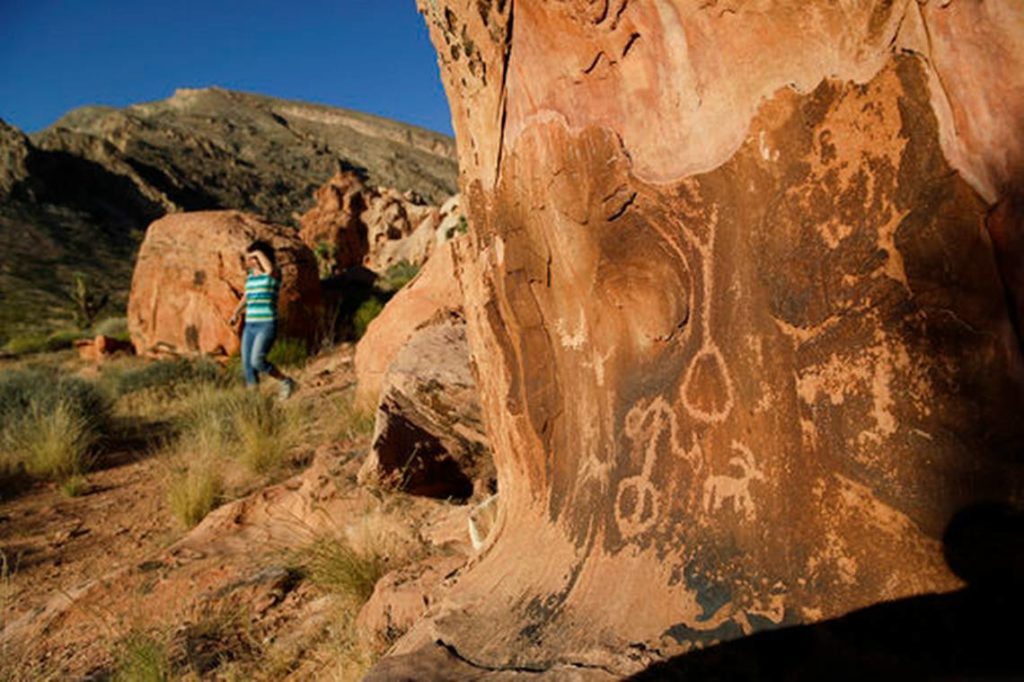
Interior Secretary Ryan Zinke is recommending that four large national monuments in the West be reduced in size, potentially opening up hundreds of thousands of acres of land revered for natural beauty and historical significance to mining, logging and other development. Zinke’s recommendation, revealed in a leaked memo submitted to the White House, prompted an outcry from environmental groups who promised to take the Trump administration to court to block the moves. The Interior secretary’s plan would scale back two huge Utah monuments – Bears Ears and Grand Staircase-Escalante – along with Nevada’s Gold Butte and Oregon’s Cascade-Siskiyou. The monuments encompass more than 3.6 million acres – an area larger than Connecticut – and were created by Democratic administrations under a century-old law that allows presidents to protect sites considered historic, geographically or culturally important. Zinke’s plan also would allow logging at a newly designated monument in Maine and urges more grazing, hunting and fishing at two sites in New Mexico. It also calls for a new assessment of border-safety risks at a monument in southern New Mexico. Bears Ears, designated for federal protection by former President Barack Obama, totals 1.3 million acres in southeastern Utah on land that is sacred to Native Americans and home to tens of thousands of archaeological sites, including ancient cliff dwellings. Grand Staircase-Escalante, in southern Utah, includes nearly 1.9 million acres in a sweeping vista larger than the state of Delaware. Republicans have howled over the monument since its creation in 1996 by former President Bill Clinton. Cascade-Siskiyou, which juts into Northern California, protects about 113,000 acres in an area where three mountain ranges converge, while Gold Butte protects nearly 300,000 acres of desert landscapes that feature rock art, sandstone towers and wildlife habitat for bighorn sheep and the threatened Mojave Desert tortoise. The Associated Press obtained a copy of the 19-page memo, which was submitted to the White House last month and has not been officially released. Two marine monuments in the Pacific Ocean also would be reduced under Zinke’s memo, and a third monument off the Massachusetts coast would be modified to allow commercial fishing. Commercial fishing also would be allowed at two Pacific sites, west of Hawaii and near American Samoa. President Donald Trump ordered a review of 27 sites earlier this year after complaining about a “massive land grab” by Obama and other former presidents. “It’s gotten worse and worse and worse, and now we’re going to free it up, which is what should have happened in the first place. This should never have happened,” Trump said in ordering the review in April. National monument designations add protections for lands known for their natural beauty with the goal of preserving them for future generations. The restrictions aren’t as stringent as for national parks, but include limits on mining, timber cutting and recreational activities such as riding off-road vehicles. No president has tried to eliminate a monument, but boundaries have been trimmed or redrawn 18 times, according to the National Park Service. Zinke’s recommendations to pare down the four Western monuments – and allow more economic activity at three other sites – “represent an unprecedented assault on our parks and public lands” by the Trump administration, said Jamie Williams, president of the Wilderness Society. “This callous proposal will needlessly punish local, predominantly rural communities that depend on parks and public lands for outdoor recreation, sustainable jobs and economic growth,” Williams said, vowing to challenge in court any actions by the Trump administration to reduce the size of national monuments. It was not clear from the memo how much energy development would be allowed on the sites recommended for changes, but Zinke said in the report that “traditional uses of the land such as grazing, timber production, mining, fishing, hunting, recreation and other cultural uses are unnecessarily restricted.” Those restrictions especially harm rural communities in western states that have traditionally benefited from grazing, mining and logging, said Zinke, a former Montana congressman. “Zinke claims to follow Teddy Roosevelt, but he’s engineering the largest rollback of public land protection in American history,” said Kieran Suckling, executive director of the Center for Biological Diversity, another environmental group. A spokeswoman for Zinke referred questions to the White House, which said in a statement that it does not comment on leaked documents. If Trump adopts the recommendations, it would quiet some of the worst fears of his opponents, who warned that vast public lands and marine areas could be lost to states or private interests. But significant reductions in the size of the monuments, especially those created by Obama, would mark the latest in a string of actions where Trump has sought to erode his Democratic predecessor’s legacy. The recommendations cap an unprecedented four-month review based on Trump’s claim that 1906 Antiquities Act has been misused by recent presidents to create oversized monuments that hinder energy development, grazing and other uses. By sealing off more than 3 million acres in solidly Republican Utah, Obama and Clinton hurt local economies in rural areas that depend on logging and ranching, said Matt Anderson of the conservative Sutherland Institute. “It begs the question: Are these expansions more about ulterior motives like climate change, presidential legacies, corporate interests like outdoor recreation companies, or are they about antiquities?” Anderson asked. Republished with permission from the Associated Press.
Greg Lein: Celebrate Alabama State Parks Heritage
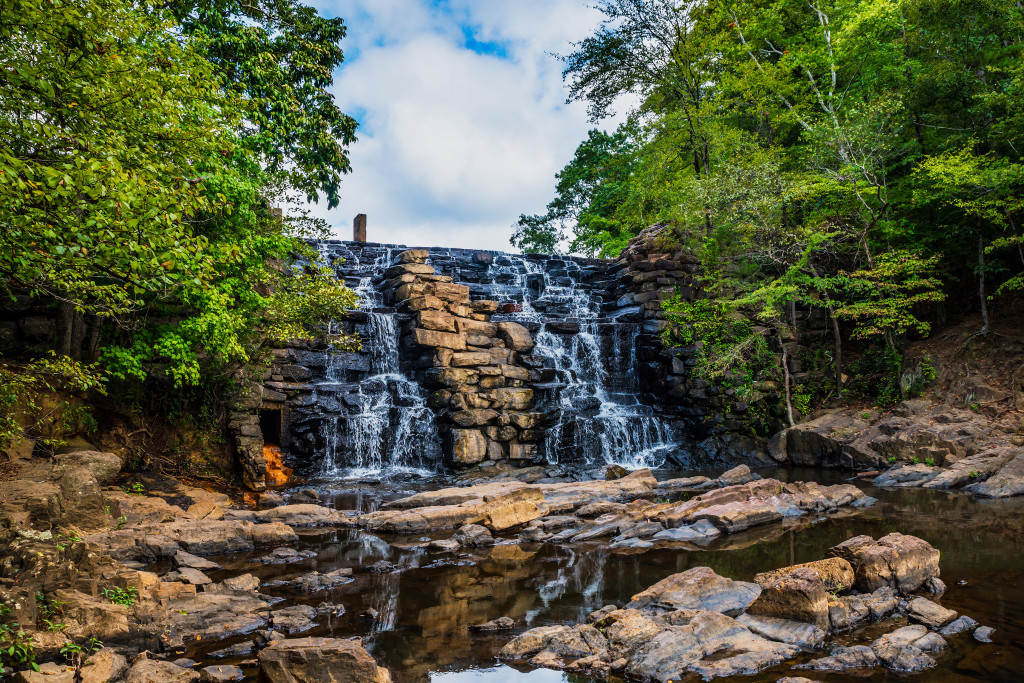
Labor Day weekend in Alabama marks two major events for citizens of our state: the unofficial end of summer and the official start of college football season. As the leaves eventually begin to change and fall temperatures start to prevail, many Alabamians will spend their Saturdays over the next few months focused on their favorite team and tracking their fantasy leagues. Alabamians’ love for parks extends much further than the Saturdays spent at the ballpark. Parks of all kinds are important to our communities; national and state parks provide dozens of options for people to go unwind. As you prepare for your Labor Day adventure and officially kick off fall, I encourage you to get outside and experience some of the amazing opportunities in Alabama’s State Parks as well as the thousands of attractions that can be found in city, county, and National Parks. Last week the National Park Service (NPS) celebrated 100 years of service and stewardship. Alabama’s State Parks are celebrating their 77th year of service. These incredible public lands are much more than simply protected lands; they are outlets for cultural, historical and environmental education. Parks also give citizens countless opportunities for recreation and help provide an exceptional quality of life with scores of recreational options. The Alabama State Parks system protects more than 47,000 acres of land across the state and offers dozens of recreational options. Within Alabama’s State Parks you’ll find hundreds of miles of trails, golf courses, mountain top views, serene beachfront, luxury resorts, ziplines, archery courses and museums that tell the story of Native Alabamians and early pioneers. These parks are as diverse and distinct as the guests that visit them each year. Parks provide opportunities for people of all backgrounds. Regardless of socioeconomic background, education, and physical ability, there’s something for everyone to enjoy at the parks. Our leaders had the choice generations ago of whether to keep these lands available to citizens. They made the right decision to keep our parks available to future generations. We hope all these amazing public lands will still be available to all Americans in the next century. The citizens of Alabama are faced with a decision this November about whether they want their State Parks preserved for future generations. A “yes” vote on Amendment 2 on the November 8 ballot is a vote to help ensure our incredible State Parks will remain available and thriving for future generations. The proposed Constitutional Amendment would protect the State Park system’s money, keeping it within the parks and preventing it from being taken and used elsewhere. Since almost all of the money in the State Parks’ budget comes from Parks’ users, it is only right for those funds to remain in the Parks. Let’s continue to celebrate our “Parks Heritage” during this centennial year and let us come together to ensure the future of our State Parks by voting “Yes” on Amendment 2 – and encourage all your friends and neighbors to do likewise. ••• Greg Lein is the Director of Alabama’s State Parks.
Terri Sewell-backed plan to restore Civil Rights-era historic sites funding passes U.S. House

U.S. Rep. Terri Sewell ended her week in Congress on a sweet note — the third-term Democrat successfully amended this year’s federal Department of the Interior‘s Appropriations Bill to include an additional $7 million in funding for the department’s Civil Rights Initiative, which funds the restoration and maintenance of historic sites and markers related to the era. “National treasures like the Selma to Montgomery National Historic Trail, the Little Rock Central High School National Historic Site, and the Martin Luther King, Jr. National Historic Site tell the story of the struggle for civil rights. It is our obligation to preserve these sites for future generations,” said Sewell, the first African-American woman to represent Alabama in Washington, in a statement. The overall appropriation given to the initiative — $16.5 million including the funds in Sewell’s amendment — still falls considerably short of the $40 million requested by President Barack Obama. “Reduced funding severely limits our ability to protect sites that belong to the National Register of Historic Places and National Historic Landmarks,” continued Sewell before enumerating her amendment’s effects. Per a release, her budget amendment: Restores $2.5 million for the rehabilitation and preservation of significant historic properties on the campuses of Historically Black Colleges and Universities, Increases funding by $2.5 million for documenting and preserving civil rights history, and Increases funding by $2 million for competitive grants for underserved communities under the Historic Preservation Fund. Sewell said she was glad of the progress the House made in its budget for Civil Rights sites, but said there was much more to be done. “On the 50th Anniversary of the Voting Rights Act, we should be investing in National Park Service sites associated with the Civil Rights Movement, not cutting necessary funding,” Sewell concluded. Sewell, was born in Selma, represents Alabama’s 6th Congressional District, including much of the state’s “Black Belt” and parts of Birmingham, Montgomery and Tuscaloosa. She is the state delegation’s sole Democrat.

